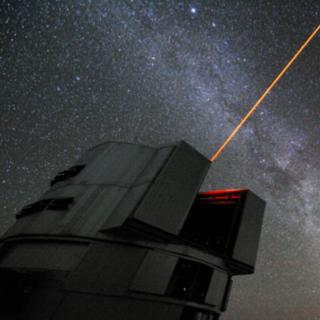Mullen, Joseph P.; Marengo, Massimo; Martínez-Vázquez, Clara E.; Bono, Giuseppe; Braga, Vittorio F.; Chaboyer, Brian; Crestani, Juliana; Dall'Ora, Massimo; Fabrizio, Michele; Fiorentino, Giuliana; Monelli, Matteo; Neeley, Jillian R.; Stetson, Peter B.; Thévenin, Frédéric
Referencia bibliográfica
The Astrophysical Journal
Fecha de publicación:
6
2022
Revista
Número de citas
17
Número de citas referidas
15
Descripción
We present new period-ϕ 31-[Fe/H] relations for first-overtone RRL stars (RRc), calibrated over a broad range of metallicities (-2.5 ≲ [Fe/H] ≲ 0.0) using the largest currently available set of Galactic halo field RRL with homogeneous spectroscopic metallicities. Our relations are defined in the optical (ASAS-SN V band) and, inaugurally, in the infrared (WISE W1 and W2 bands). Our V-band relation can reproduce individual RRc spectroscopic metallicities with a dispersion of 0.30 dex over the entire metallicity range of our calibrator sample (an rms smaller than what we found for other relations in literature including nonlinear terms). Our infrared relation has a similar dispersion in the low- and intermediate-metallicity range ([Fe/H] ≲ -0.5), but tends to underestimate the [Fe/H] abundance around solar metallicity. We tested our relations by measuring both the metallicity of the Sculptor dSph and a sample of Galactic globular clusters, rich in both RRc and RRab stars. The average metallicity we obtain for the combined RRL sample in each cluster is within ±0.08 dex of their spectroscopic metallicities. The infrared and optical relations presented in this work will enable deriving reliable photometric RRL metallicities in conditions where spectroscopic measurements are not feasible; e.g., in distant galaxies or reddened regions (observed with upcoming Extremely Large Telescopes and the James Webb Space Telescope), or in the large sample of new RRL that will be discovered in large-area time-domain photometric surveys (such as the LSST and the Roman space telescope).
Proyectos relacionados

Evolución Galáctica en el Grupo Local
La formación y evolución de galaxias es un problema fundamental en Astrofísica. Su estudio requiere “viajar atrás en el tiempo”, para lo cual hay dos enfoques complementarios. El mas extendido consiste en analizar las propiedades de las galaxias a diferentes distancias cosmológicas. Nuestro equipo se concentra en el otro enfoque, denominado
Emma
Fernández Alvar